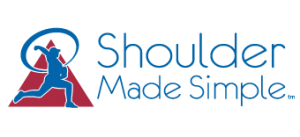Prescription pain medications
By: Dale J. Buchberger, PT, DC, CSCS, DACBSP
In recent weeks there has been an increasing amount of media attention regarding the prescription, use, and abuse of pain killing medications. Healthcare providers such as physical therapists, chiropractors, massage therapists, and acupuncturists not only deal daily with patients that take prescription pain medications, but they can also help provide treatment alternatives that can reduce pain without taking addictive pharmaceutical medications. According to the American College of Preventive Medicine, opioids are the most abused pharmaceuticals in patients with chronic pain. The prevalence of lifetime substance use disorders ranges from 36% to 56% in patients treated with opioids for chronic back pain, 43% of this population having current substance use disorder (SUD), and 5% to 24% having aberrant medication-taking behaviors. About 14% to 16% of pain patients not having SUD use illicit drugs in combination with prescription drugs for pain, while 34% of patients with SUD combine legal pain medication with illicit drug use. These statistics highlight the difficult situation of balancing pain treatment with preventing pharmaceutical abuse.
The adolescent population is at high risk of substance abuse involving prescription pharmaceuticals. Adolescents under 18 years of age who use substances are 8-times more likely to develop drug dependence in adulthood. While illicit drug abuse is declining in this group, prescription drug abuse continues to climb. Statistically in 2006, 2.2 million teens reported non-medical use of a prescription drug in the past year. Nearly 1 in 10 high school seniors reported non-medical use of Vicodin. Approximately 1 in 20 abuse Oxycontin. Prescription and over-the-counter (OTC) medications account for 8 of the 14 most frequently abused drugs by high school seniors. Teens say prescription drugs are easier to obtain than illicit drugs, and 52% believe prescription narcotics are available everywhere.
College campuses are especially high-risk environments for the non-medical abuse and diversion of prescription medications: 9.4% of students abuse pain medications prescribed to them and 13.4% of students have been approached to divert their pain medication. Peer pressure is highest for prescription stimulants (54%) followed by prescription pain medications (26%), sedatives or anxiolytics (19%), and sleep medications (14%).
The Journal of the Board of Family Medicine reports that the use of prescription drugs falls into these categories: for legitimate, prescribed medical treatment (for example, methamphetamines for narcolepsy and opiates for pain related to severe trauma); as an additional drug to use when the drug of choice is unavailable on the streets; to be used as a booster to achieve a more intense high; as an alternative addictive drug when their drug of choice has been eliminated from use by drug testing; or as an alternative addictive drug prescribed by physicians (for example, amphetamines in diet clinics), whether issued naively by the physician or for profit.
With all of this information available, the question that has to be asked is why are prescribing healthcare providers not altering their habits when it comes to managing a patient’s pain? Surgeons commonly prescribe medications after surgery. The most common criticism is why would a surgeon prescribe 30 days worth of pain medication for an arthroscopic knee surgery? If you have had an uncomplicated knee surgery, it is common to need a maximum of 4-8 pain tablets used in the first 3-5 postoperative days. Does this patient need 30 days worth of pain medication? No, not really. Patients that receive physical therapy after surgery use less pain medication. If healthcare providers utilized physical therapy, chiropractic, acupuncture, and massage therapy as the primary forms of pain relieving treatment instead of pharmaceutical prescriptions, the social and financial burden of substance abuse would be greatly reduced. It has been shown that healthcare costs for patients abusing opioids is 14 times higher that for patients that don’t abuse opioids. According to the Journal of Opioid Management in 2010, more than 40% of primary care physicians report difficulty in discussing the possibility of prescription medication abuse with patients and more than 90% fail to detect symptoms of substance abuse.
Generally speaking, if prescribing healthcare providers prescribed pain medications in lower volumes and utilized a multi-modal approach to pain management, we could reduce the level of substance abuse. As an example, if patients received a volume of prescription pain medication commensurate with the complexity of the surgery or the injury (4-8 pills after an arthroscopic knee surgery instead of 30 or more) received adjunctive treatment appropriate for the situation (physical therapy, chiropractic, acupuncture, or massage) this would reduce the chance for substance abuse and reduce healthcare costs and societal impact. Healthcare providers of all types can play a role in the prevention of substance abuse. It is up to providers and patients to have open conversations about pain and non-pharmaceutical methods to reduce the opportunity for patients to become addicted to prescription pain medications and even street drugs such as heroin.




